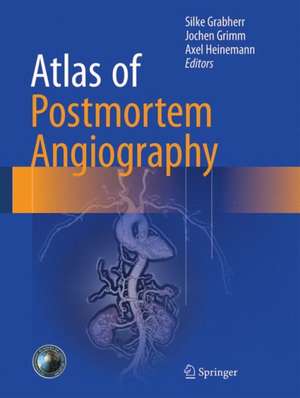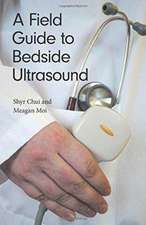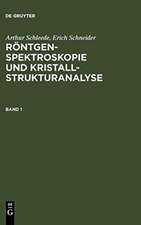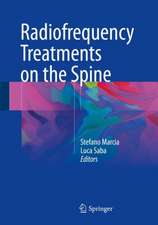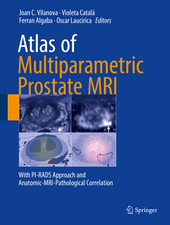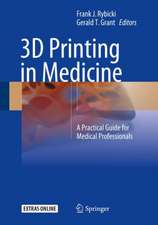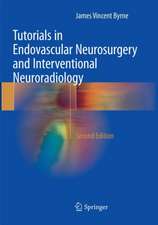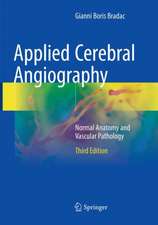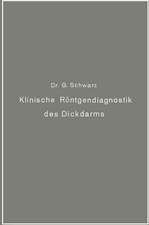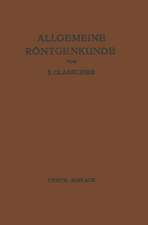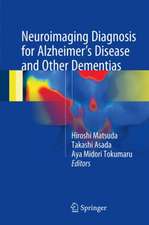Atlas of Postmortem Angiography
Editat de Silke Grabherr, Jochen M. Grimm, Axel Heinemannen Limba Engleză Hardback – 20 apr 2016
Preț: 1883.52 lei
Preț vechi: 1982.65 lei
-5% Nou
Puncte Express: 2825
Preț estimativ în valută:
360.46€ • 374.93$ • 297.58£
360.46€ • 374.93$ • 297.58£
Carte tipărită la comandă
Livrare economică 08-14 aprilie
Preluare comenzi: 021 569.72.76
Specificații
ISBN-13: 9783319285351
ISBN-10: 3319285351
Pagini: 368
Ilustrații: XIII, 602 p. 575 illus., 224 illus. in color.
Dimensiuni: 210 x 279 x 37 mm
Greutate: 2.18 kg
Ediția:1st ed. 2016
Editura: Springer International Publishing
Colecția Springer
Locul publicării:Cham, Switzerland
ISBN-10: 3319285351
Pagini: 368
Ilustrații: XIII, 602 p. 575 illus., 224 illus. in color.
Dimensiuni: 210 x 279 x 37 mm
Greutate: 2.18 kg
Ediția:1st ed. 2016
Editura: Springer International Publishing
Colecția Springer
Locul publicării:Cham, Switzerland
Public țintă
Professional/practitionerCuprins
Part I: Introduction: PostmortemImaging - Development and Historical Review.- PMI – A part of forensicmedicine.- PMI – A transdisciplinary approach for objectified knowledge. PartII: Postmortem Angiography: PMA – A historical review.- PMA – and thethanatology of the heart-circulation system. Part III: PMA – the technicalapproach: PMA and the Virtangio system.- PMA and CT.- PMA and MRI.- PMA andcontrast agent.- PMA and Database and storage. Part IV: PMA - The role of theradiographer: The new profession of forensic radiographer. PartV: MultiphasePostmortem Angiography: Neuro (Head).- Neck.- Heart.- Vascular system.- Lungs.-Gastro intestinal tract.- Abdominal Organs. Part VI: Post-mortem Angiography ofthe Extremities: Upper extremities.- Lower extremities. Part VII: In cases ofnatural death: Sudden cardiac death.- Systemic diseases, sepsis, multi-organfailure.- Other natural death. Part VIII: PMA and trauma: Blunt trauma.- Sharptrauma.- Shot.- Explosion, Thermic trauma.- Suffocation / Strangulation.-Intoxication.- Drowning.- Other traumatic death (Cardio-Inhibitor Reflex,electrocution).- Post-operative death. Part IX: Special casuistic cases:Forensic radiological diagnosis and reconstruction. Part X: PMA and clinicalpathology (non-forensic cases): Heart surgery.- Intensive cardiology.-Intensive care unit.- Emergency medicine. Part XI: PMA – special studies:Children.- Decomposition.- Histology – Immuno-Histology.- Intravasalpressures.- Medical malpractice.- Animal model.- Selective angio. Part XII: PMA– in Teaching and clinical anatomy: PMA in student teaching.- PMA in clinicalanatomy.
Notă biografică
SilkeGrabherr, University Center of Legal Medicine, Department of Forensic Medicine,Lausanne, Switzerland
JochenGrimm, University Hospital Vaudois, Department of Legal Medicine, Lausanne,Switzerland
AxelHeinemann, University Hospital Hamburg- Eppendorf, Department of Legal Medicine,Hamburg, Germany
JochenGrimm, University Hospital Vaudois, Department of Legal Medicine, Lausanne,Switzerland
AxelHeinemann, University Hospital Hamburg- Eppendorf, Department of Legal Medicine,Hamburg, Germany
Textul de pe ultima copertă
This atlas of postmortem angiography provides a summary of techniques that have been developed and used in order to visualize the human vascular system. The indications, advantages, limitations, and pitfalls of the different techniques are explained in detail through the use of examples from real cases and a wealth of informative images, as well as knowledge from the latest scientific works. Helpful recommendations are made concerning interpretation of the obtained radiological images, which will allow readers to start their own work in the field of post-mortem angiography or to ease and improve their practice. The atlas has been edited and written by members of an international working group created in 2012, “Technical Working Group Post-mortem Angiography Methods” (TWGPAM), who for the first time summarize their experiences concerning this new approach. Since findings explaining the reasons for both natural and traumatic death are often hidden within the vascular system, post-mortemangiography is of the highest importance in elucidating cause of death and may represent the key to minimally invasive autopsy.
Caracteristici
Provides a detailed summary of techniques developed to visualize the human vascular system Explains the indications, advantages, limitations, and pitfalls of the different techniques Makes helpful recommendations on image interpretation Presents examples from real cases and a wealth of informative images?
